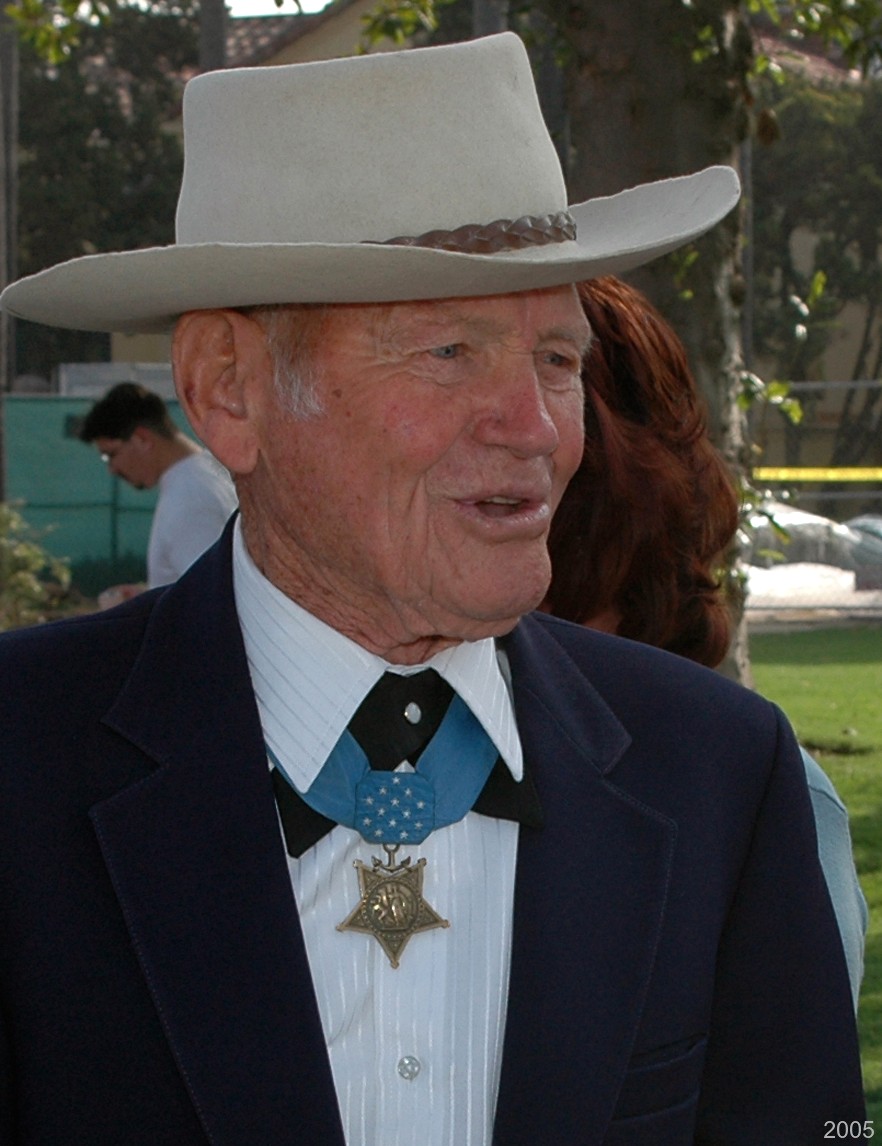 |
||
|
HOME
|
US Navy -
ships
|
US Navy - air
units
|
USMC - air
units
|
International
Navies
|
Weapon Systems
|
Special Reports |
||
|
US Navy - Guided Missile Destroyer DDG 113 - USS John Finn |
||
|
||
| 07/24 | ||
|
Type, class: Guided
Missile Destroyer - DDG; Arleigh Burke class, Flight IIA (restart) Builder: Huntington Ingalls Shipbuilding, Pascagoula, Mississippi, USA STATUS: Awarded: June 15, 2011 Laid down: November 5, 2013 Launched: March 28, 2015 Christened: May 2, 2015 Commissioned: July 15, 2017 IN SERVICE Homeport: forward deployed to Fleet Activities Yokosuka, Japan Namesake: LT John William Finn (1909-2010) Ships Motto: STATUS ET PUGNO (stand fast and fight) Technical Data: see: INFO > Arleigh Burke class Guided Missile Destroyer - DDG |
||
| images | ||
|
U.S. Naval Ship Repair Facility and Japan Regional Maintenance Center executed a docking of the of the USS John Finn (DDG 113) in Commander Fleet Activities Yokosuka’s Dry Dock#6, in preparation for the ship’s Selected Restricted Availability (SRA) - April 2024 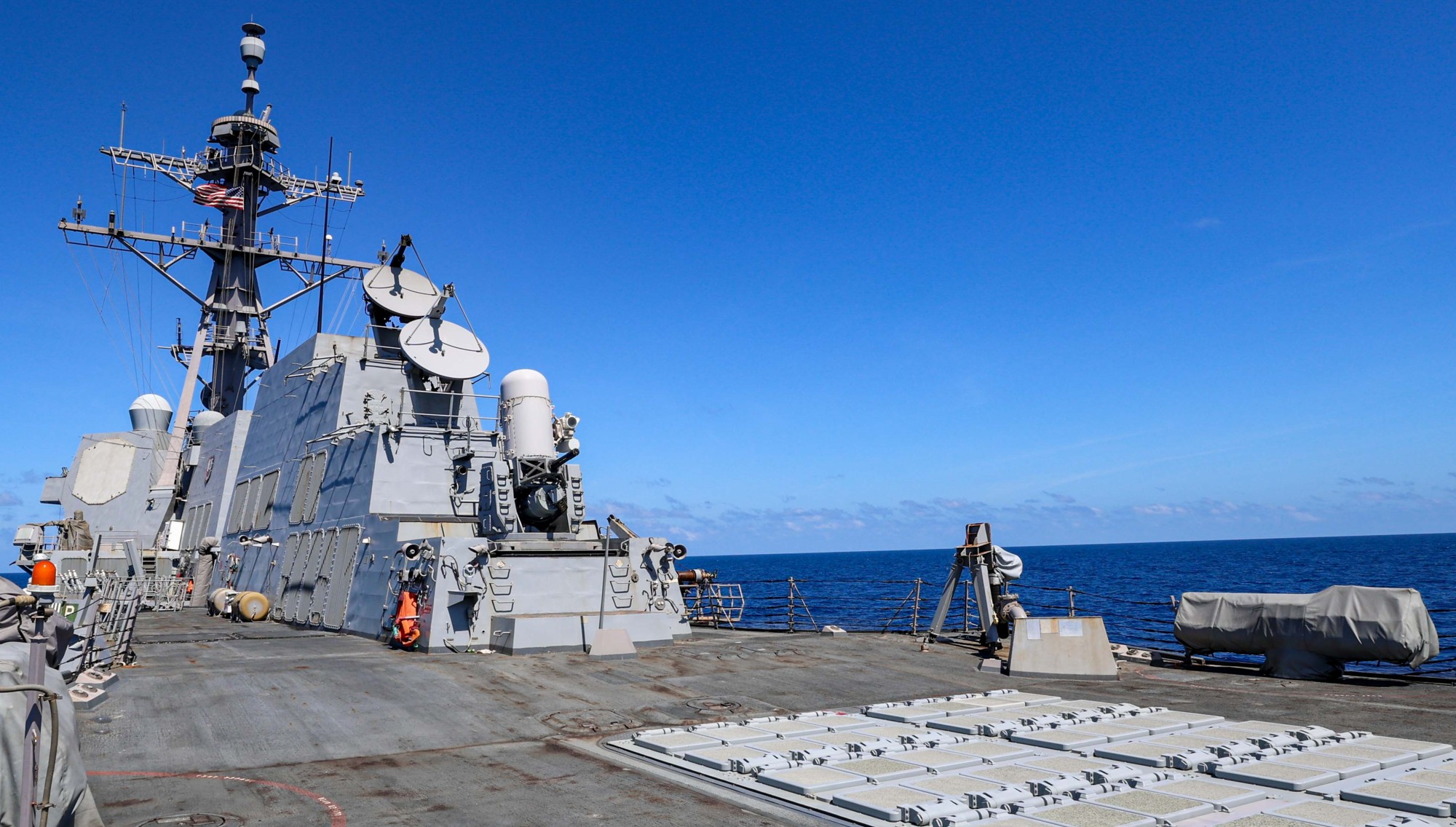 South China Sea - February 2024 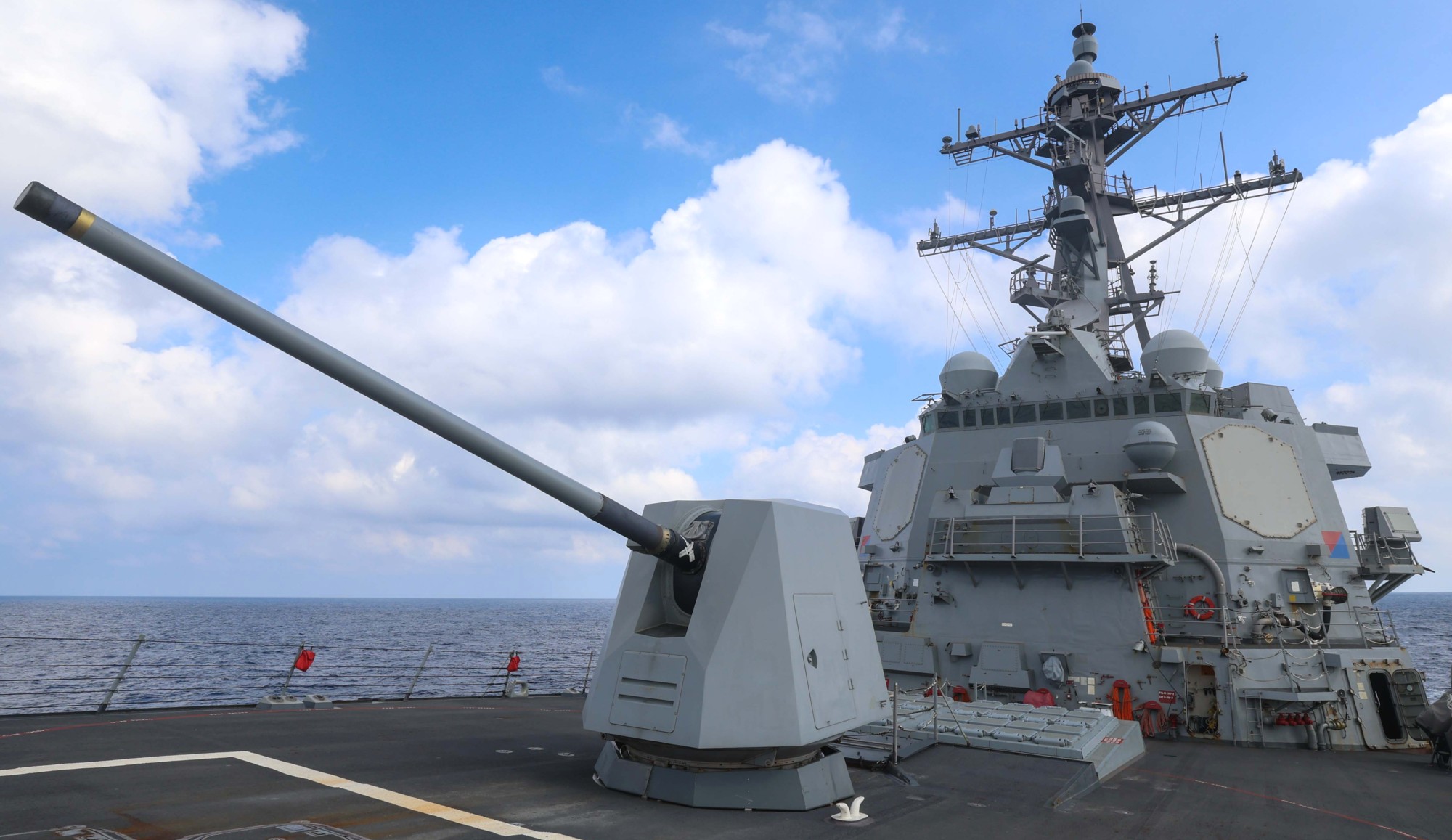 South China Sea - February 2024 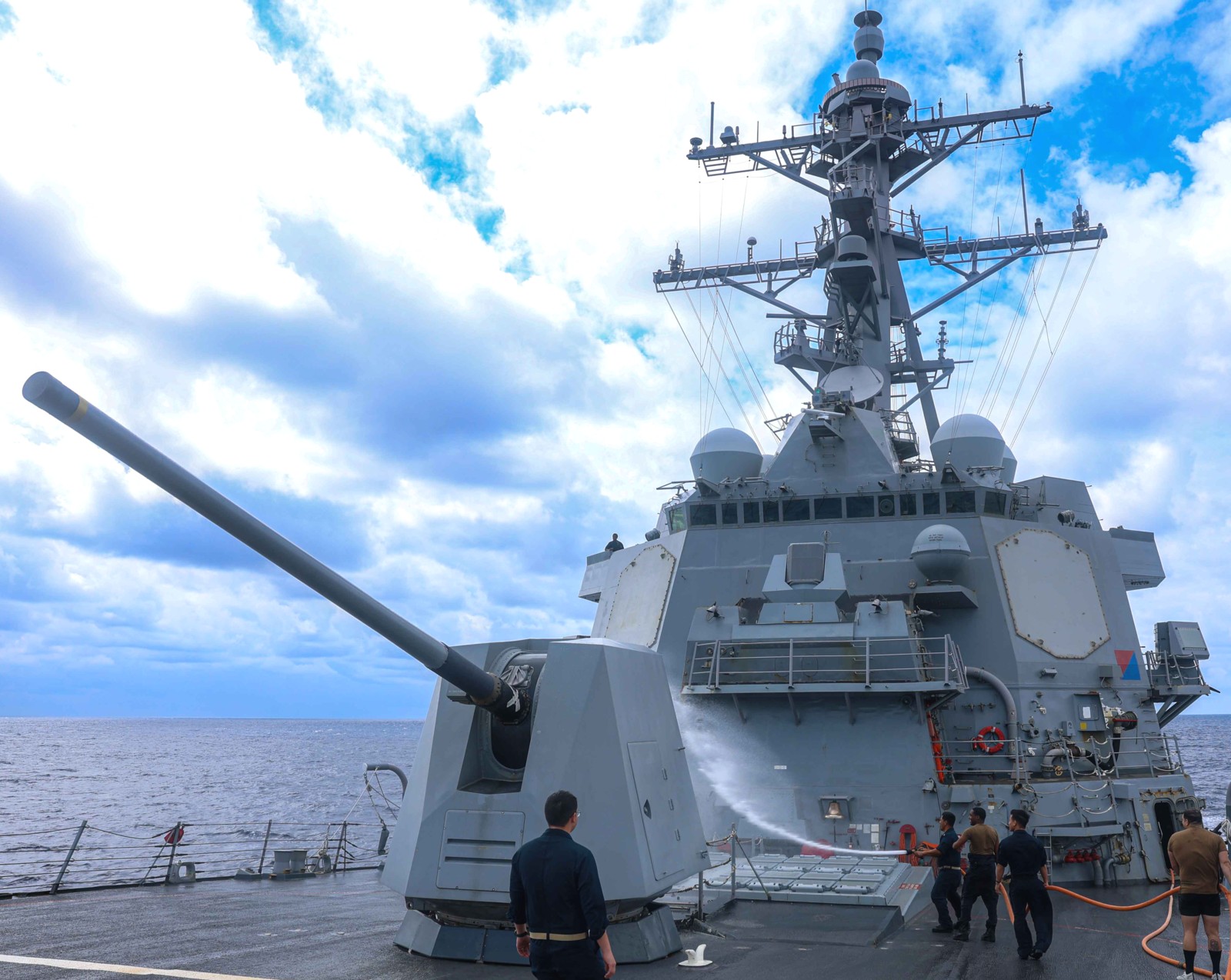 Philippine Sea - January 2024  Mk.45 Mod.4 gun fire - Sea of Japan - October 2023 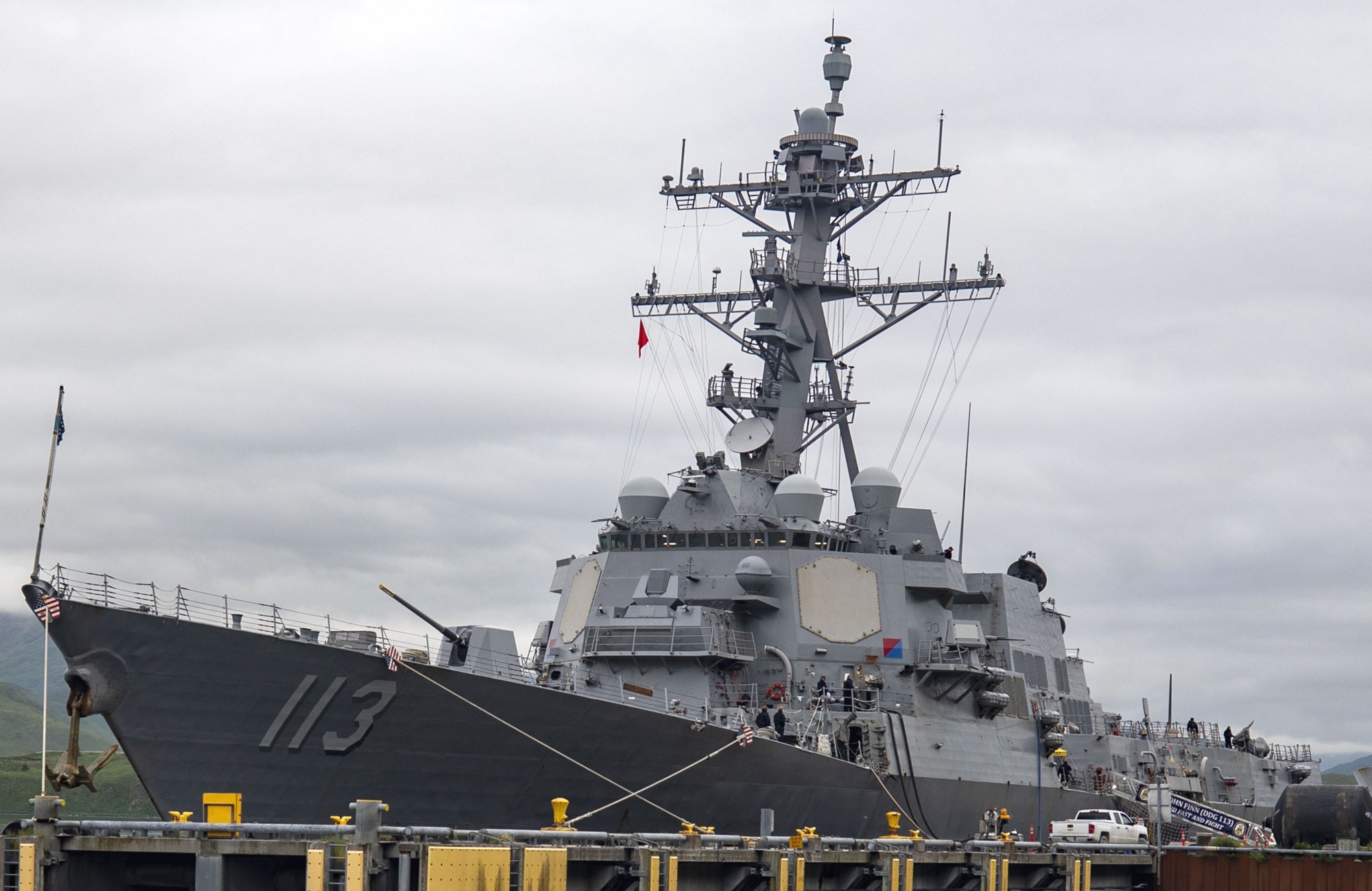 Dutch Harbor, Alaska - August 2023 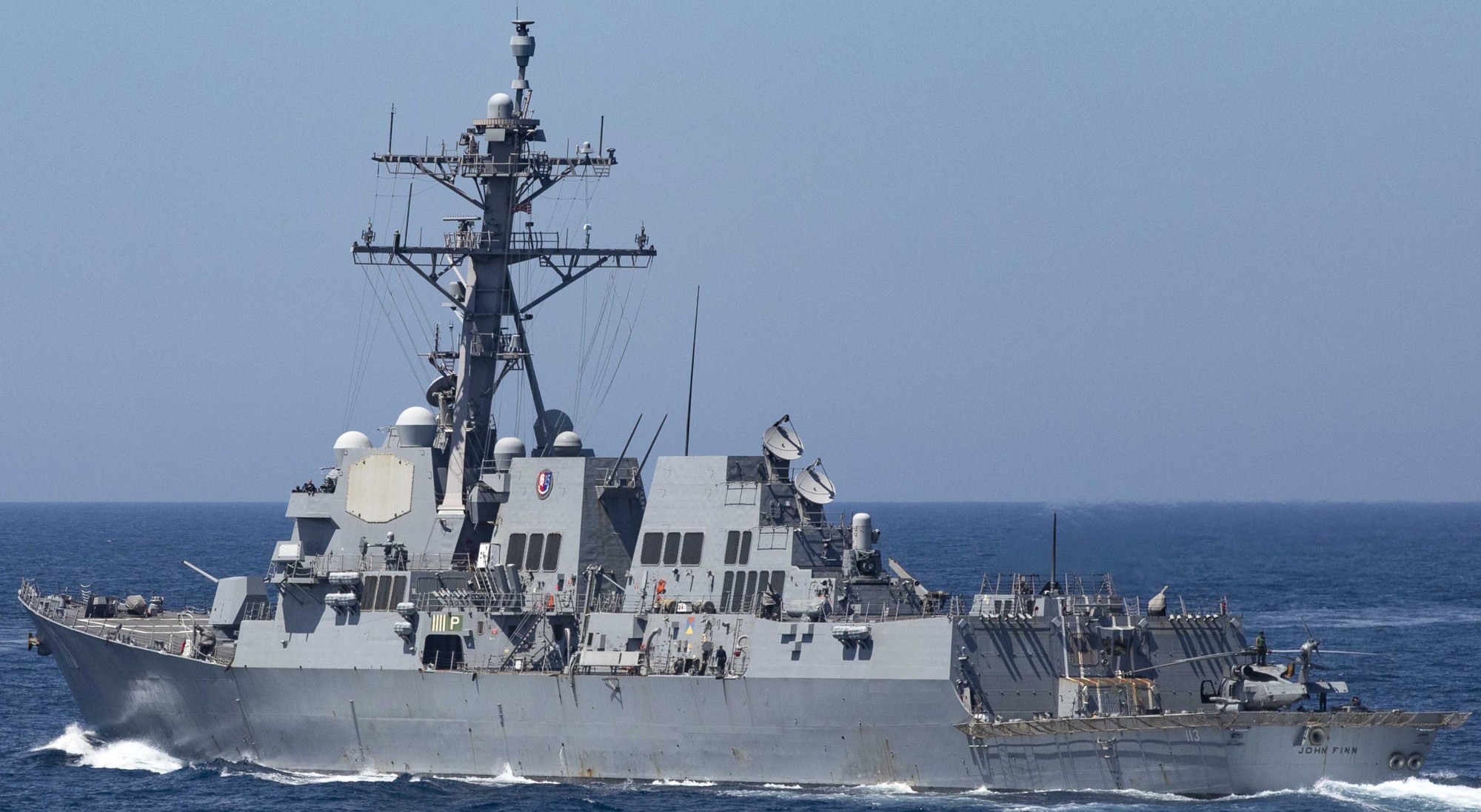 Sea of Japan - July 2023 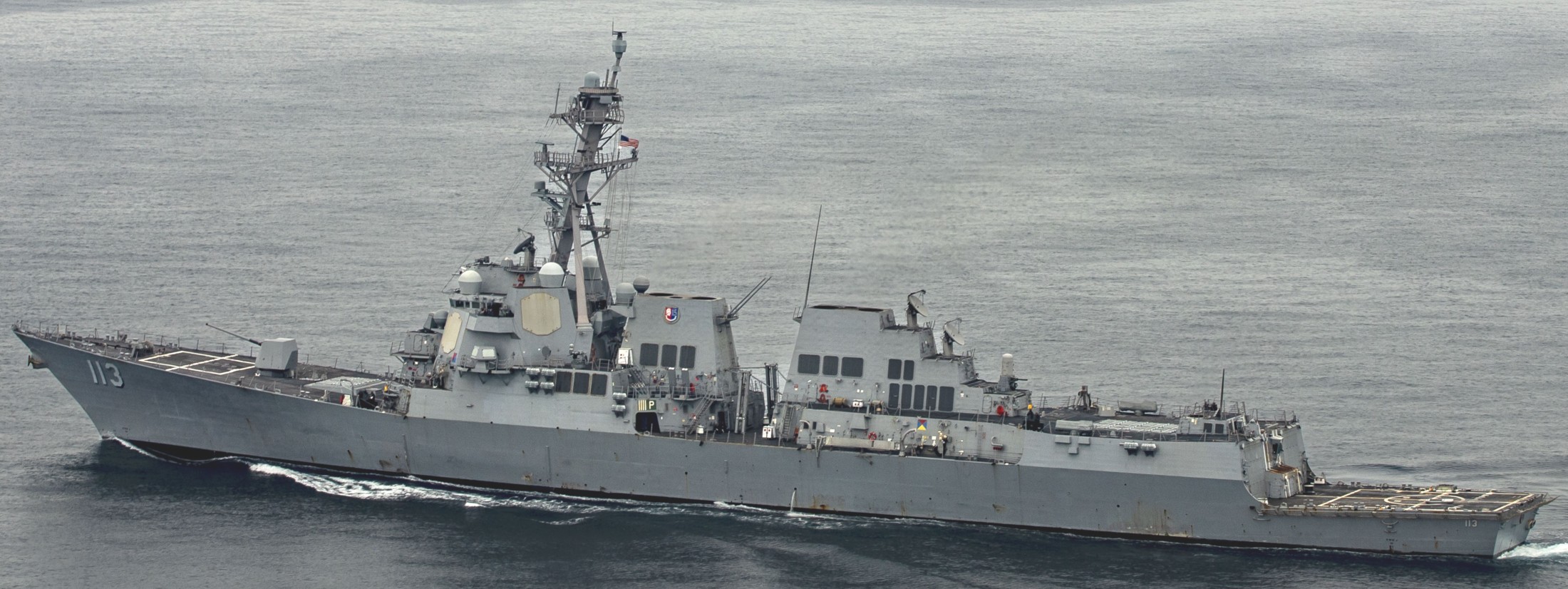 Sea of Japan - July 2023  arriving at Fleet Activities Yokosuka, Japan - March 4, 2023  arriving at Fleet Activities Yokosuka, Japan - March 4, 2023  arriving at Fleet Activities Yokosuka, Japan - March 4, 2023  arriving at Fleet Activities Yokosuka, Japan - March 4, 2023  arriving at Fleet Activities Yokosuka, Japan - March 4, 2023  Naval Base San Diego, California - January 2023 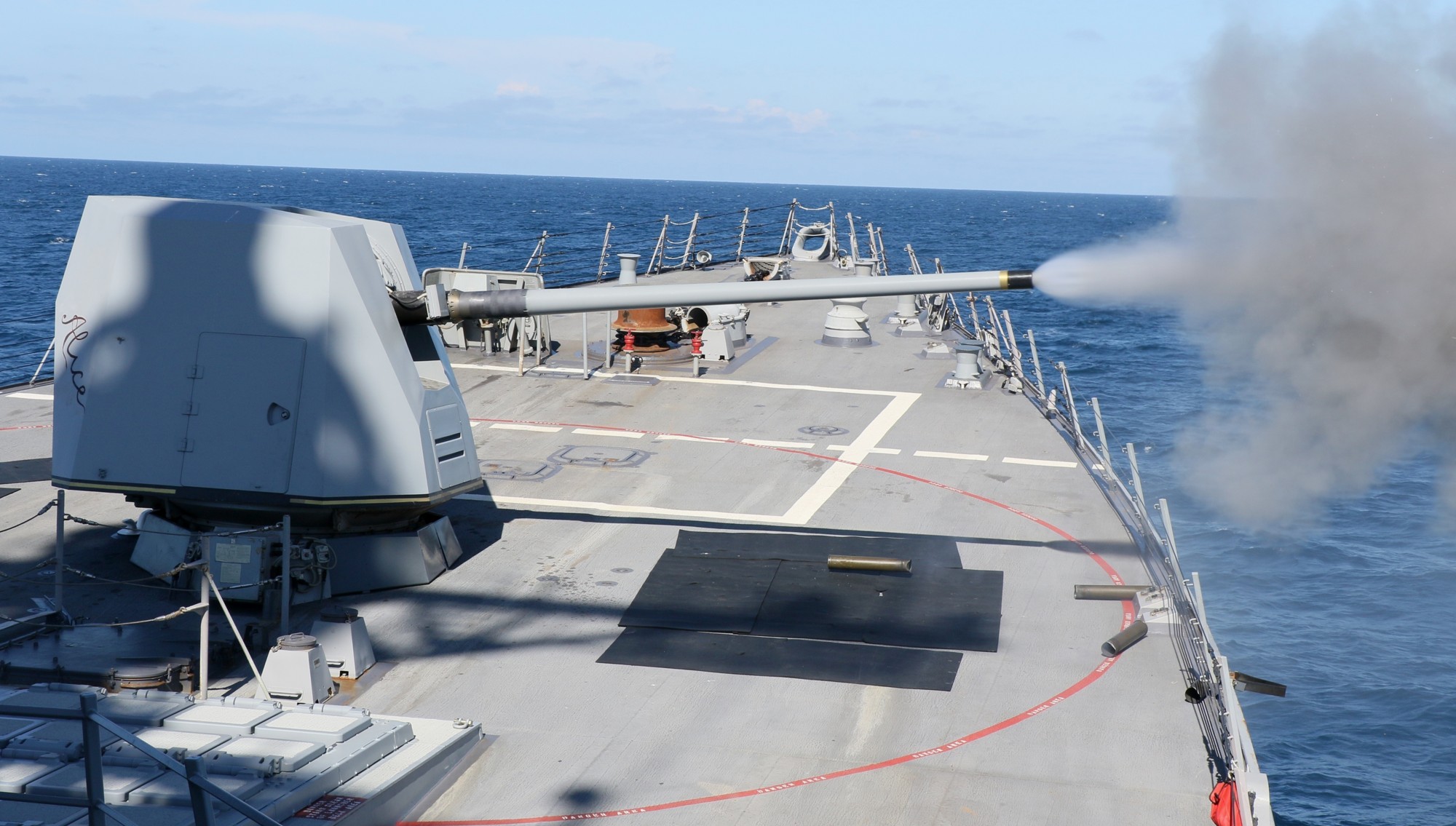 Mk.45 gun fire exercise - Pacific Ocean - September 2022  returning to Naval Base San Diego, California - April 2021  returning to Naval Base San Diego, California - April 2021  returning to Naval Base San Diego, California - April 2021 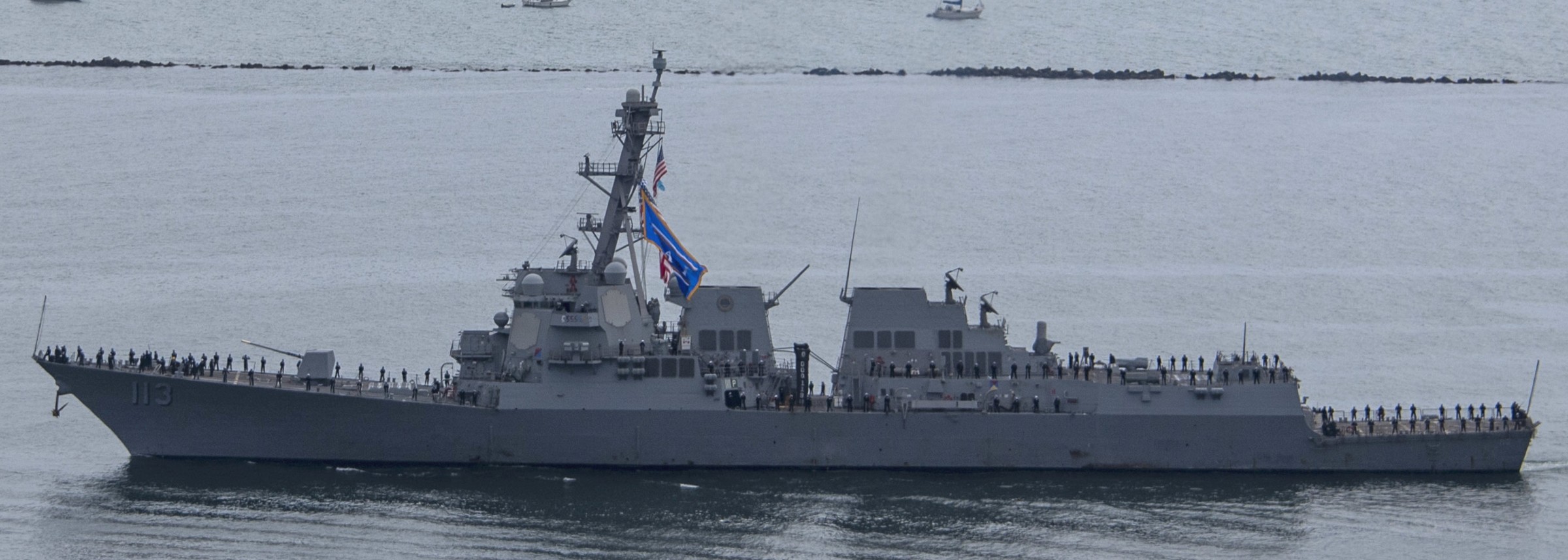 returning to Naval Base San Diego, California - April 2021  Mk.45 Mod.4 gun fire exercise - Pacific Ocean - March 2021  Pacific Ocean - March 2021  South China Sea - February 2021  with USS Theodore Roosevelt (CVN 71) - South China Sea - February 2021  with USS Theodore Roosevelt (CVN 71) - South China Sea - February 2021 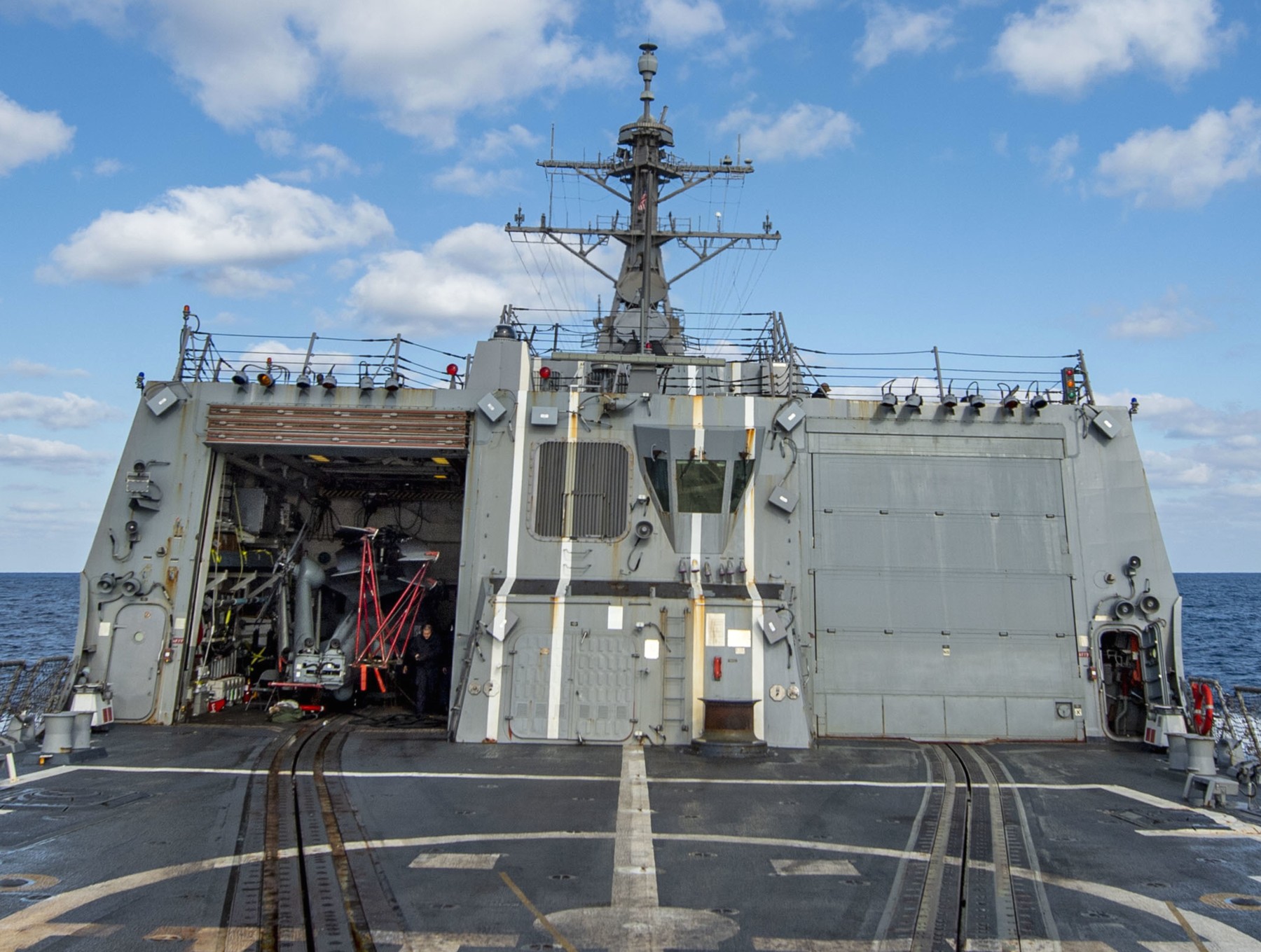 Pacific Ocean - February 2021  replenishment-at-sea (RAS) - Pacific Ocean - January 2021  replenishment-at-sea (RAS) - Pacific Ocean - January 2021  Mk.45 Mod.4 gun fire exercise - Pacific Ocean - January 2021  Mk.45 Mod.4 gun fire exercise - Pacific Ocean - January 2021  Pacific Ocean - January 2021 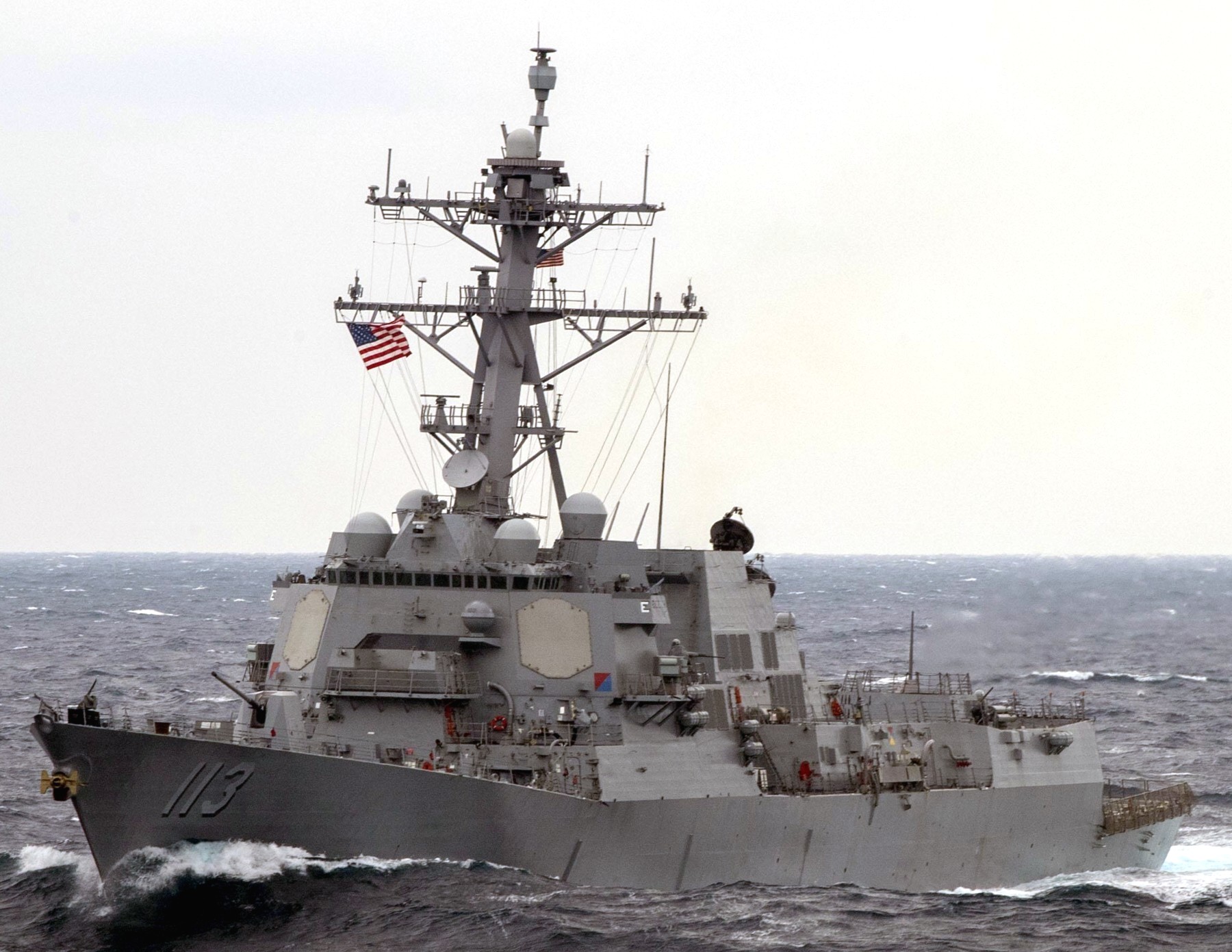 Pacific Ocean - January 2021  Pacific Ocean - January 2021  Pacific Ocean - January 2021 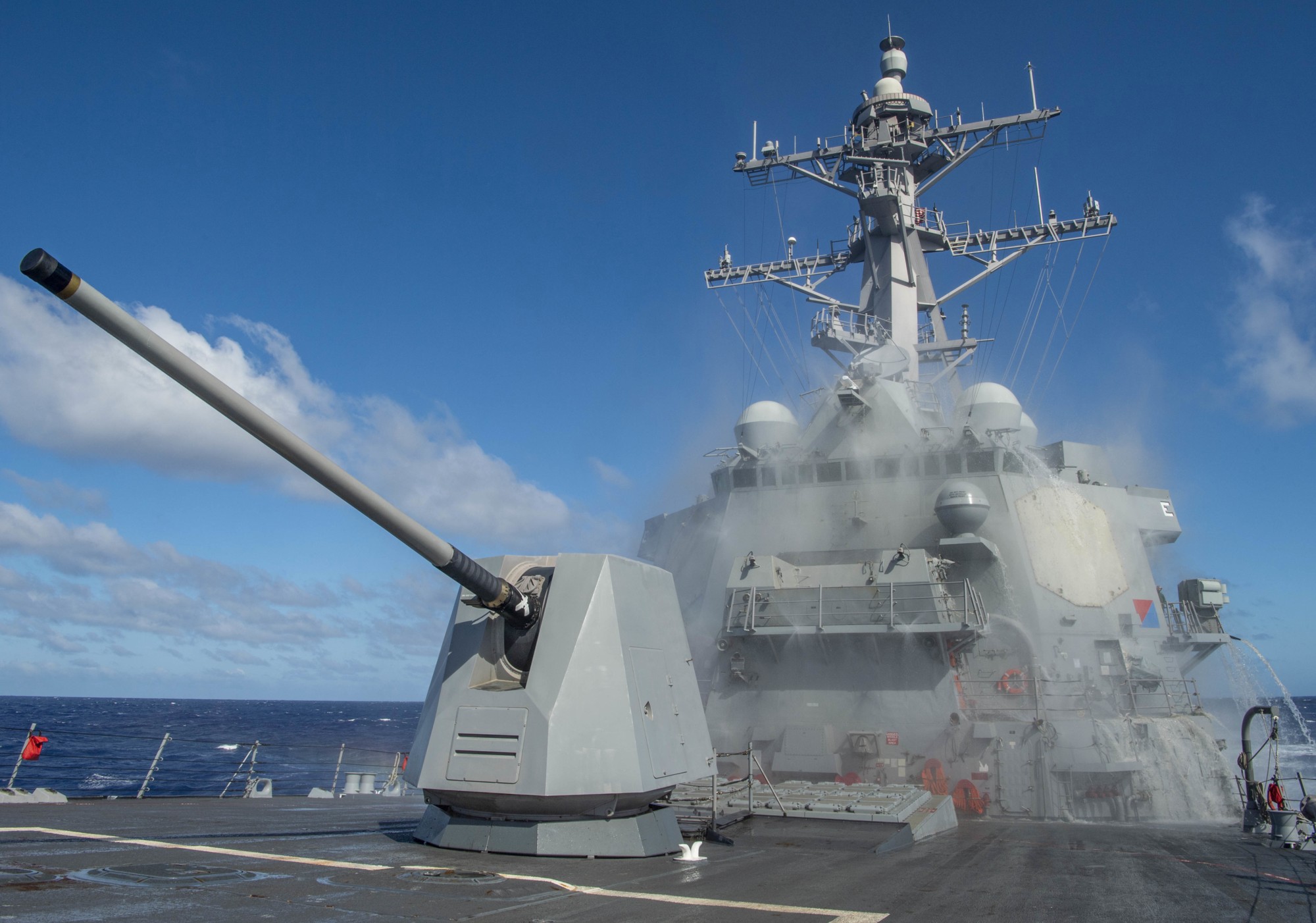 countermeasure wash-down exercise - Pacific Ocean - December 2020  US Marines helicopter landing training - Pacific Ocean - May 2020 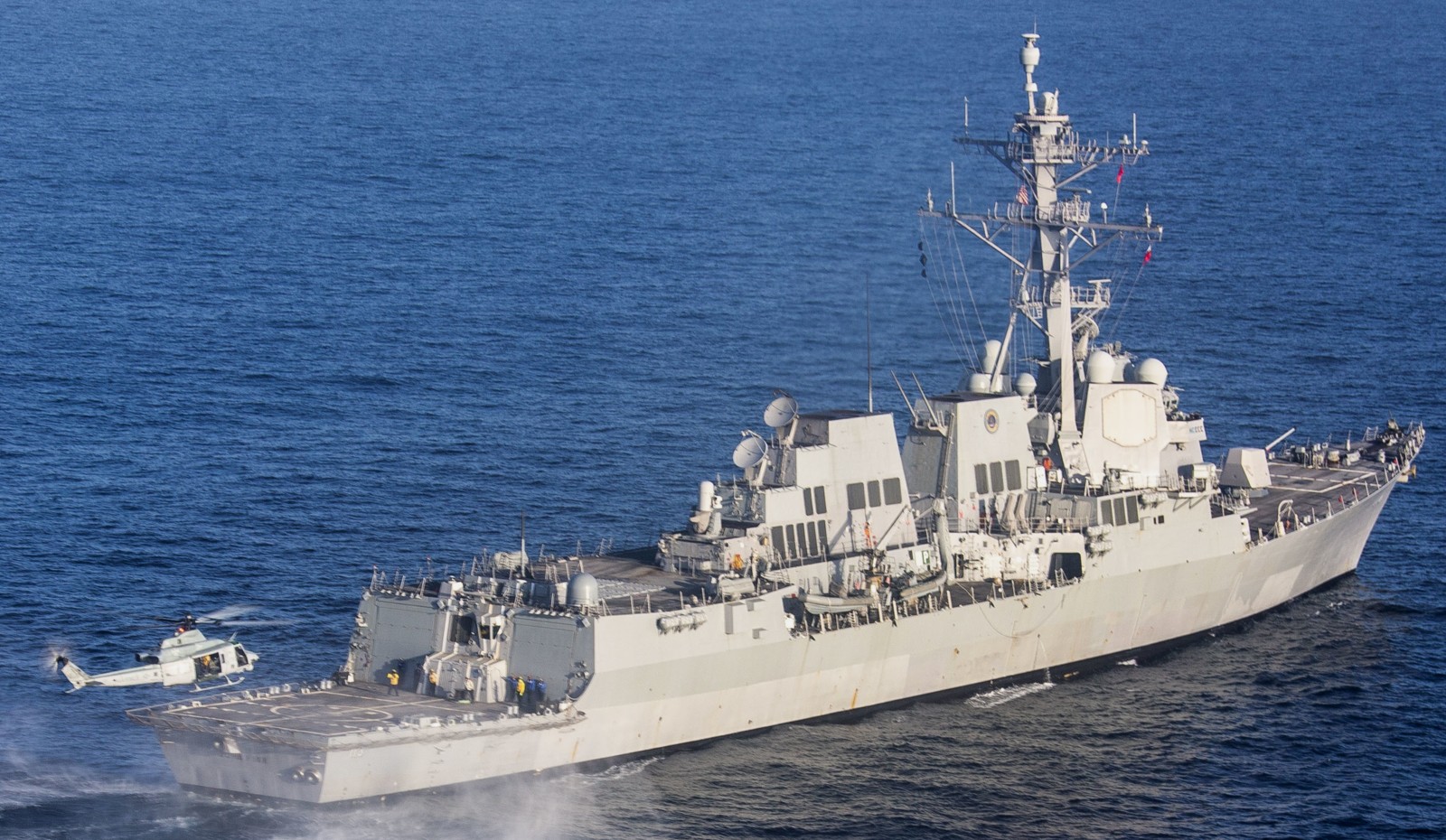 US Marines helicopter landing training - Pacific Ocean - May 2020 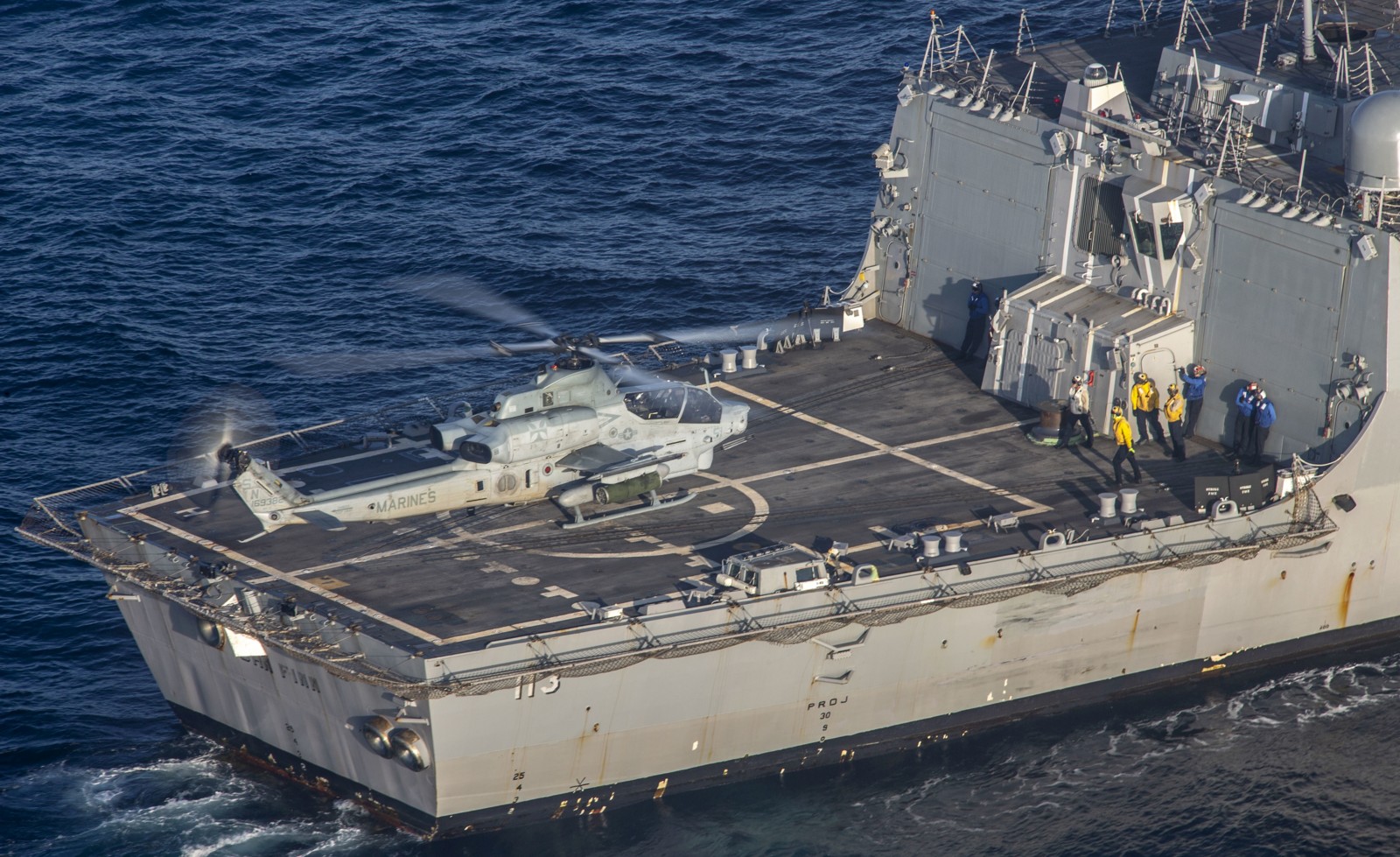 US Marines helicopter landing training (AH-1Z Viper attack helicopter) - Pacific Ocean - May 2020  US Marines helicopter landing training (UH-1Y Venom) - Pacific Ocean - May 2020  US Marines helicopter landing training - Pacific Ocean - May 2020 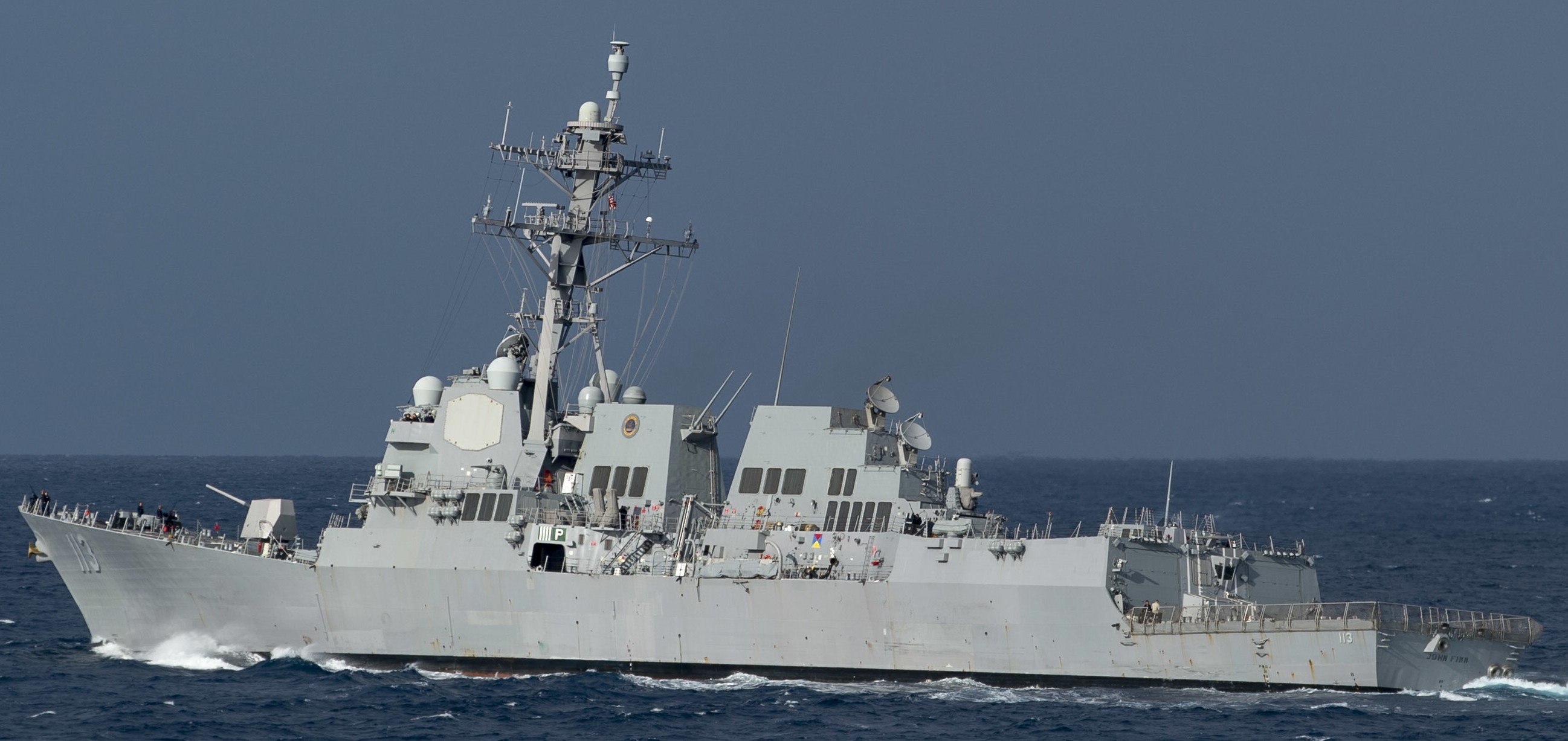 Pacific Ocean - November 2019  returning to San Diego, California - July 2019  returning to San Diego, California - July 2019  returning to San Diego, California - July 2019  returning to San Diego, California - July 2019  Pacific Ocean - May 2019  in dry dock - 2019  departing Joint Base Pearl Harbor-Hickam, Hawaii - July 18, 2017  departing Joint Base Pearl Harbor-Hickam, Hawaii - July 18, 2017  Joint Base Pearl Harbor-Hickam, Hawaii - July 2017  commissioning ceremony - Pearl Harbor, Hawaii - July 15, 2017  commissioning ceremony - Pearl Harbor, Hawaii - July 15, 2017  commissioning ceremony - Pearl Harbor, Hawaii - July 15, 2017  commissioning ceremony - Pearl Harbor, Hawaii - July 15, 2017  commissioning ceremony - Pearl Harbor, Hawaii - July 15, 2017  Joint Base Pearl Harbor-Hickam, Hawaii - July 2017  Joint Base Pearl Harbor-Hickam, Hawaii - July 2017  Joint Base Pearl Harbor-Hickam, Hawaii - July 2017  arriving at Joint Base Pearl Harbor-Hickam, Hawaii - July 2017 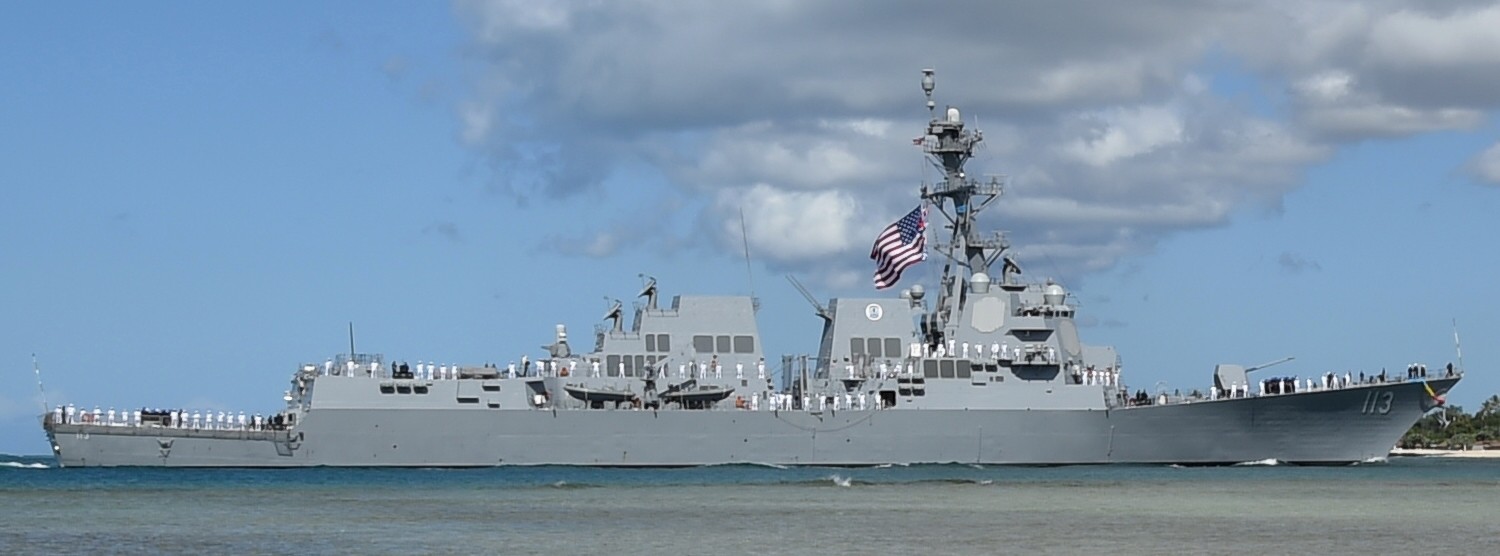 arriving at Joint Base Pearl Harbor-Hickam, Hawaii - July 2017  Panama Canal - June 2017 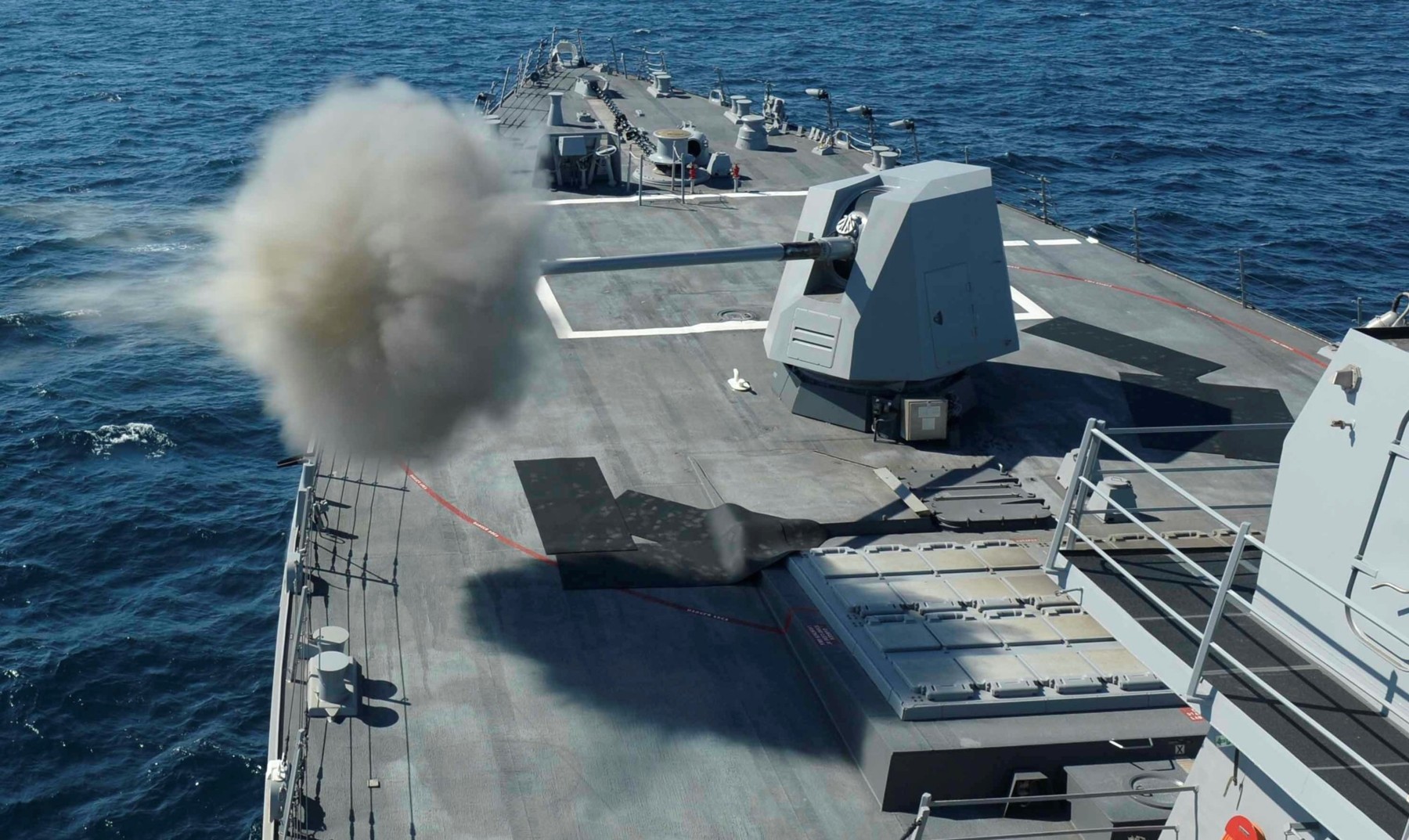 PCU/USS John Finn (DDG 113) firing its Mk-45 gun during builders trials - October 2016  PCU/USS John Finn (DDG 113) launching a RIM-66L Standard Missile SM-2MR Block IIIA during builders trials - October 2016  PCU/USS John Finn (DDG 113) launching a RIM-66L Standard Missile SM-2MR Block IIIA during builders trials - October 2016  PCU/USS John Finn (DDG 113) launching a RIM-66L Standard Missile SM-2MR Block IIIA during builders trials - October 2016 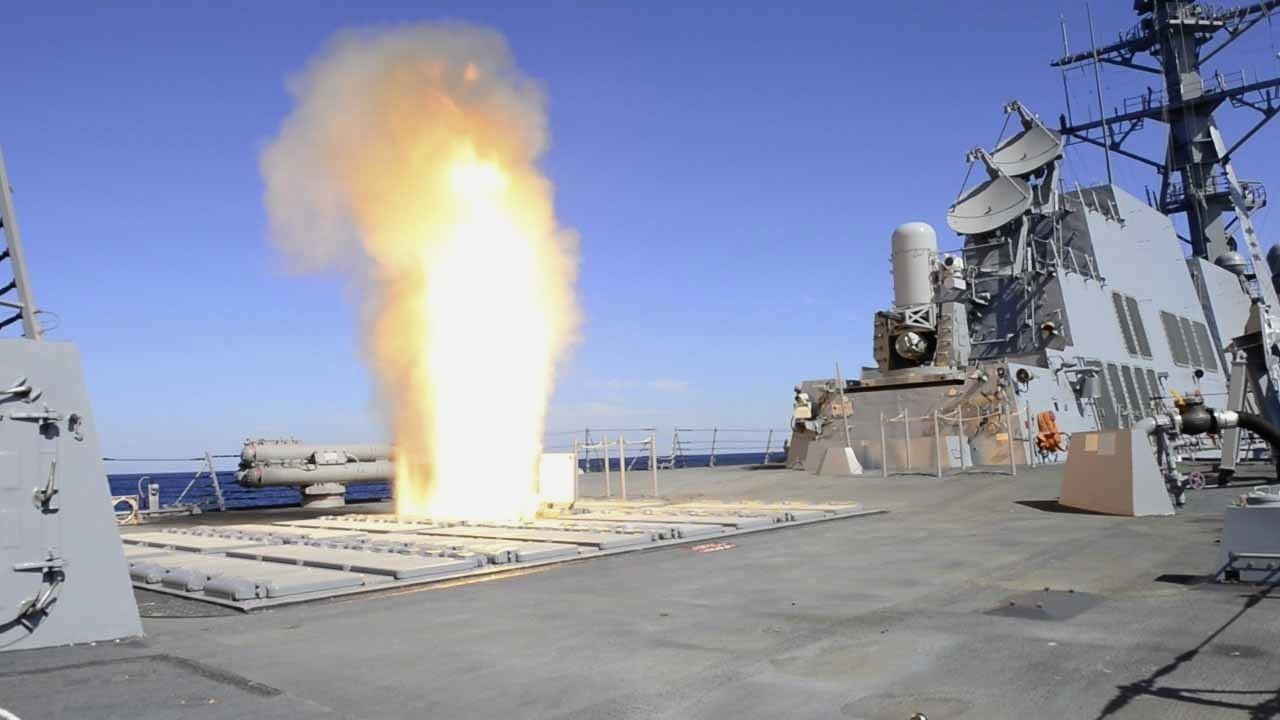 PCU/USS John Finn (DDG 113) launching a RIM-66L Standard Missile SM-2MR Block IIIA during builders trials - October 2016 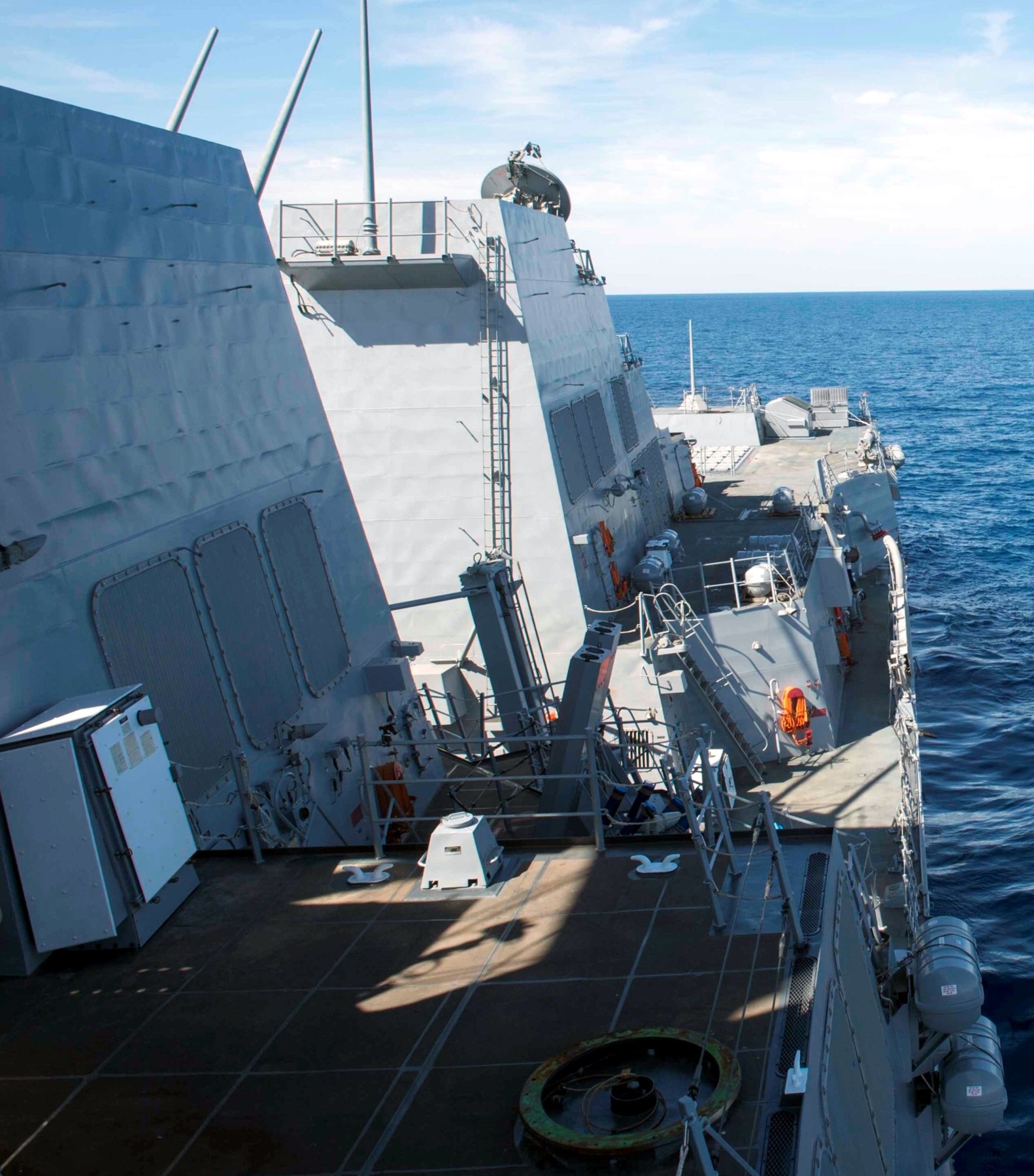 PCU/USS John Finn (DDG 113 during builders trials - October 2016  civilians in the Combat Information Center (CIC) during builders trials - October 2016 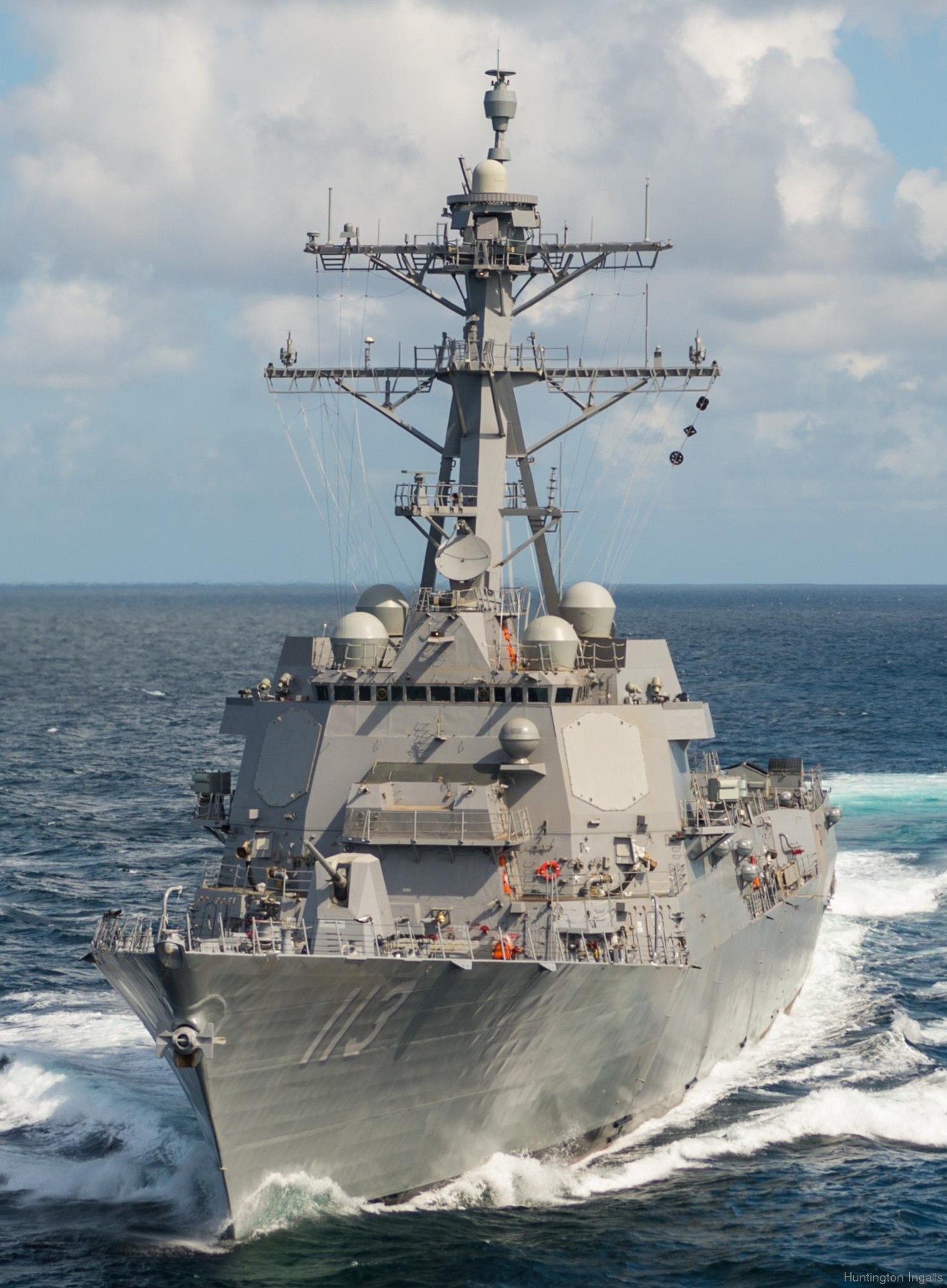 trials - August 2016  christening ceremony - Pascagoula, Mississippi - May 2, 2015  launching at Huntington Ingalls Shipbuilding, Pascagoula, Mississippi - March 28, 2015  launching at Huntington Ingalls Shipbuilding, Pascagoula, Mississippi - March 28, 2015  under construction at Huntigton Ingalls Shipbuilding, Pascagoula, Mississippi |
||
|
|
||
|
USS John Finn (DDG 113): On 17 November 2020, John Finn successfully intercepted an ICBM using a SM-3 Block IIA missile. The target missile was launched from the a test site on the Kwajalein Atoll and simulated an attack on Hawaii. This was the first time that an ICBM has been successfully intercepted by a SM-3 and the first time a US Navy ship has brought down such a missile. Maiden deployment December 2020 - April 2021 |
||
|
|
||
|
John William Finn (24 July 1909 - 27 May 2010) ... was a sailor in the United States Navy who, as a chief petty officer, received the United States military's highest decoration, the Medal of Honor, for his actions during the attack on Pearl Harbor in World War II. As a chief aviation ordnanceman stationed at Naval Air Station Kaneohe Bay, he earned the medal by manning a machine gun from an exposed position throughout the attack, despite being repeatedly wounded. He continued to serve in the Navy and in 1942 was commissioned an ensign. In 1947 he was reverted to chief petty officer, eventually rising to lieutenant before his 1956 retirement. In his later years he made many appearances at events celebrating veterans. At the time of his death, Finn was the oldest living Medal of Honor recipient, the last living recipient from the attack on Pearl Harbor, and the last United States Navy recipient of World War II. Early life: Born on 24 July 1909, in Compton, California, Finn dropped out of school after the seventh grade. He enlisted in the Navy in July 1926, shortly before his seventeenth birthday, and completed recruit training in San Diego. After a brief stint with a ceremonial guard company, he attended General Aviation Utilities Training at Naval Station Great Lakes, graduating in December. By April 1927 he was back in the San Diego area, having been assigned to Naval Air Station North Island. He initially worked in aircraft repair before becoming an aviation ordnanceman and working on anti-aircraft guns. He then served on a series of ships: USS Lexington, USS Houston, USS Jason, USS Saratoga, and USS Cincinnati. Finn was promoted to chief petty officer (E-7, the highest enlisted rank in the Navy at that time) in 1935 after only nine years of active duty. He later commented on his promotions, "Everybody thought I was a boy wonder. I was just in the right place at the right time." As a chief, Finn served with patrol squadrons in San Diego, Washington, and Panama. Attack on Pearl Harbor: By December 1941, Finn was stationed at Naval Air Station Kaneohe Bay on the island of Oahu in Hawaii. As a chief aviation ordnanceman, he was in charge of twenty men whose primary task was to maintain the weapons of VP-11, a PBY Catalina flying boat squadron. At 7:48 a.m. on the morning of Sunday, 7 December 1941, Finn was at his home, about a mile from the aircraft hangars, when he heard the sound of gunfire. Finn recalled how a neighbor was the first to alert him, when she knocked on his door saying, "They want you down at the squadron right away!" He drove to the hangars, catching sight of Japanese planes in the sky on the way, and found that the airbase was being attacked, with most of the PBYs already on fire. Finn's men were trying to fight back by using the machine guns mounted in the PBYs, either by firing from inside the flaming planes or by detaching the guns and mounting them on improvised stands. Finn later explained that one of the first things he did was to take control of a machine gun from his squadron's painter. "I said, 'Alex, let me take that gun' ... knew that I had more experience firing a machine gun than a painter." Finding a movable tripod platform used for gunnery training, Finn attached the .50 caliber machine gun and pushed the platform into an open area, from which he had a clear view of the attacking aircraft. He fired on the Japanese planes for the next two hours, even after being seriously wounded, until the attack had ended. In total, he received 21 distinct wounds, including a bullet through his right foot and an injury to his left shoulder, which caused him to lose feeling in his left arm. "I got that gun and I started shooting at Jap planes," Finn said in a 2009 interview. "I was out there shooting the Jap planes and just every so often I was a target for some," he said, "In some cases, I could see their [the Japanese pilots'] faces." Despite his wounds, Finn returned to the hangars later that day. After receiving medical treatment, he helped arm the surviving American planes. His actions earned him the first Medal of Honor to be awarded in World War II. He was formally presented with the decoration on 14 September 1942, by Admiral Chester Nimitz, for courage and valor beyond the call of duty. The ceremony took place in Pearl Harbor on board USS Enterprise. In 1942 Finn was commissioned, and served as a Limited Duty Officer with the rank of ensign. In 1947 he was reverted to his enlisted rank of chief petty officer, eventually becoming a lieutenant with Bombing Squadron VB-102 and aboard USS Hancock. He retired from the Navy as a lieutenant in September 1956. Later life and legacy: From 1956 until shortly before his death, Finn resided on a 90-acre (0.36 km2) ranch in Live Oak Springs, near Pine Valley, California. He and his wife became foster parents to five Native American children, causing him to be embraced by the Campo Band of Diegueño Mission Indians, a tribe of Kumeyaay people in San Diego. His wife, Alice Finn, died in 1998. John Finn was a member of the John Birch Society. In his retirement he made many appearances at events honoring veterans. On 25 March 2009, he attended National Medal of Honor Day ceremonies at Arlington National Cemetery. With the aid of walking sticks, he stood beside U.S. President Barack Obama during a wreath-laying ceremony at the Tomb of the Unknown Soldier. Later that day, Finn was a guest at the White House. It was his first visit to the White House, and his first time meeting a sitting president. On 27 June 2009, a crowd of over 2,000 made up of family, friends and well-wishers came to Pine Valley to celebrate Finn's 100th birthday. The Association of Aviation Ordnancemen presented him with an American flag which had flown on each of the 11 aircraft carriers then in active service. When called a hero during a 2009 interview Finn responded: That damned hero stuff is a bunch [of] crap, I guess. [...] You gotta understand that there's all kinds of heroes, but they never get a chance to be in a hero's position. Finn died at age 100 on the morning of 27 May 2010, at the Chula Vista Veterans Home. He was buried beside his wife at the Campo Indian Reservation's cemetery, after a memorial service in El Cajon. He was the last surviving Medal of Honor recipient from the attack on Pearl Harbor, the oldest living recipient, and the only aviation ordnanceman to have ever received the medal. Upon his death, fellow World War II veteran Barney F. Hajiro became the oldest living Medal of Honor recipient. source: wikipedia - - - - - another biography: John William Finn was born in Los Angeles, California, on July 23, 1909. He served continuously as an enlisted man in the Navy from July 29, 1926, when he was first sworn in, until he was appointed Ensign, for temporary service, to rank from June 15, 1942. Subsequently, he was promoted to Lieutenant (junior grade), to date from May 1, 1943, and Lieutenant, to rank from July 1, 1944. On March 28, 1947, upon his transfer to the Fleet Reserve, he received to the rate of Aviation Chief Ordnance man. On September 1, 1956, he was transferred to the Retired List of the US Navy and was advanced to Lieutenant the highest rank he held while on active duty. After receiving his commission in 1942, he served with Bombing Squadron One Hundred Two until March 31, 1942, then was assigned to the Naval Air Technical Training Center, Norman, Oklahoma. In August 1943 he reported for training at the Aerial Free Gunnery Instructors School, Naval Air Station, Pensacola, Florida, and from September to November 1943 had further training at the Naval Training School, Briggs Manufacturing Company, Detroit, Michigan and the Naval Technical Training Center, Chicago, Illinois. Following brief assignment at the Naval Air Stations, Jacksonville and Fort Lauderdale, Florida, he reported in April 1945 on board USS Hancock (CV-19). He served in that aircraft carrier, participating in the Third Fleet operations against Japan, until December 1946, when he was ordered to the Naval Training Center, San Diego, California, for separation processing. Hospitalized until January 1947, he was transferred to the Fleet Reserve on March 28, 1947 and on April 18, that year, was relieved of active duty. In addition to the Medal of Honor, Lieutenant Finn has the Purple Heat Medal (for wounds received in enemy action); American Defense Service Medal, Base Clasp; American Campaign Medal; Asiatic-Pacific Campaign Medal; World War II Victory Medal; and the Navy Occupation Service Medal, Asia Clasp. For enlisted service he has a Good Conduct Medal with two bronze stars. source: US NHHC Medal of Honor citation of Lieutenant John William Finn: (as printed in the official publication "Medal of Honor, 1861-1949, The Navy", page 183): "For extraordinary heroism, distinguished service, and devotion above and beyond the call of duty. During the first attack by Japanese airplanes on the Naval Air Station, Kanoehe Bay, on 7 December 1941, Lieutenant Finn promptly secured and manned a 50-caliber machine gun mounted on an instruction stand in a completely exposed section of the parking ramp, which was under heavy enemy machine-gun strafing fire. Although painfully wounded many times, he continued to man this gun and to return the enemy's fire vigorously and with telling effect throughout the enemy strafing and bombing attacks and with complete disregard for his own personal safety. It was only by specific orders that he was persuaded to leave his post to seek medical attention. Following first-aid treatment, although obviously suffering much pain and moving with great difficulty, he returned to the squadron area and actively supervised the rearming of returning planes. His extraordinary heroism and conduct in this action were in keeping with the highest traditions of the United States Naval Service."
|
||
| patches + more | ||
  |
||
|
|
seaforces.org |
USN ships
start page | |




